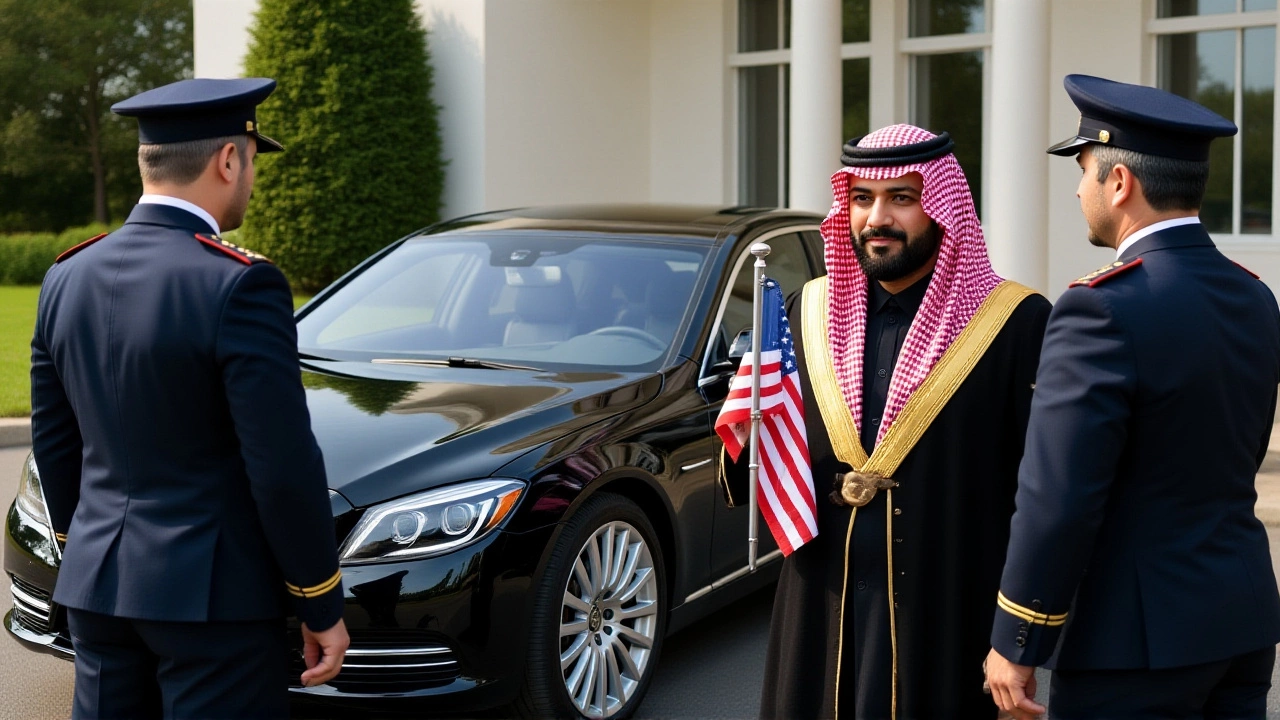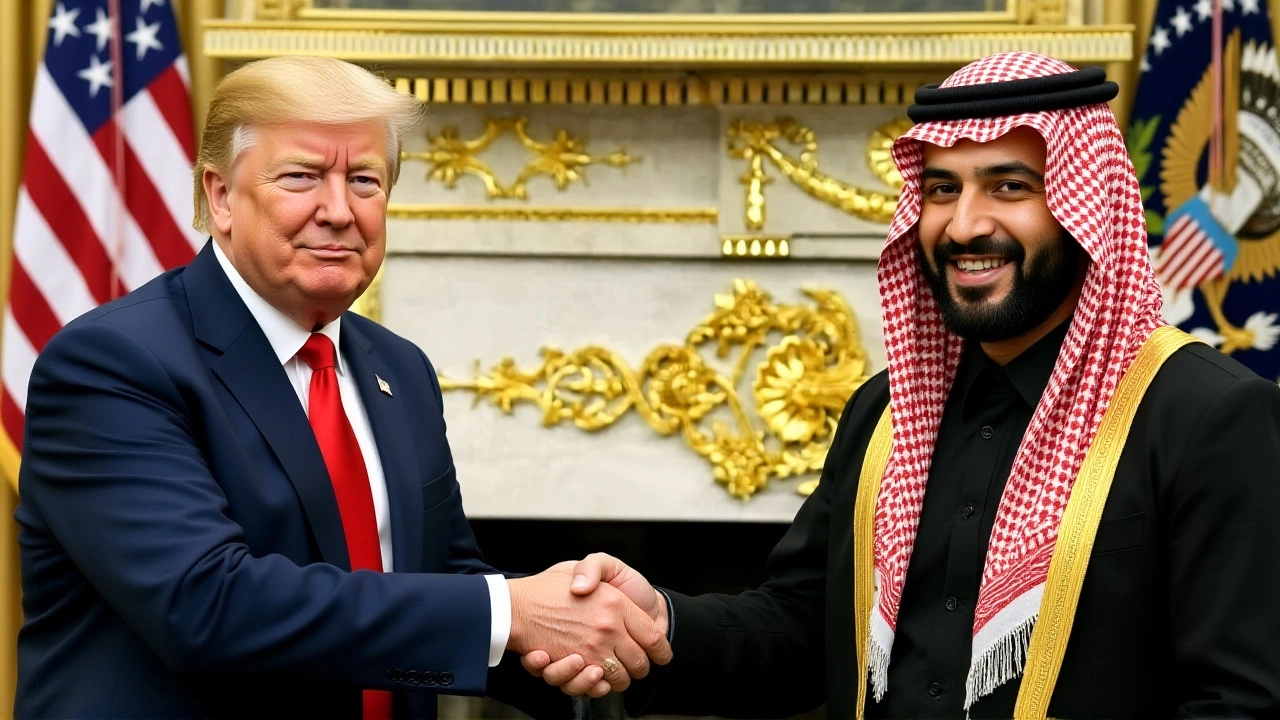On the evening of November 18, 2025, the White House shimmered under chandeliers as President Donald Trump and First Lady Melania Trump welcomed Crown Prince Mohammed bin Salman, Crown Prince and Prime Minister of the Kingdom of Saudi Arabia, to a formal black-tie dinner in the East Room. The event capped a high-stakes day of negotiations that reshaped the future of U.S.-Middle East security and economic ties — and it wasn’t just about diplomacy. It was about legacy.
A Night Built on Strategy, Not Just Ceremony
The dinner began at 00:15 GMT on November 19, just hours after the two leaders wrapped up their final bilateral talks. The menu, meticulously curated by White House chefs, was more than elegant — it was symbolic. Honeynut squash soup with cranberry relish? A nod to American harvest traditions. Pistachio-crusted lamb with pomegranate jus? A deliberate bridge to Saudi flavors. Dessert — couverture mousse pear with vanilla ice cream — was quiet, refined, like the agreements signed earlier that day. No grand speeches over dessert. Just quiet nods, knowing glances, and the weight of what had been accomplished.Attendees included not just diplomats but titans of industry and culture: Elon Musk, CEO of Tesla and SpaceX; Tim Cook, CEO of Apple Inc.; Cristiano Ronaldo, global football icon; and Gianni Infantino, president of FIFA. Their presence wasn’t accidental. This wasn’t just a state dinner — it was a signal.
Behind Closed Doors: The Deals That Changed Everything
Earlier that day, in the Oval Office, Trump and bin Salman signed a landmark strategic defense agreement — the most consequential since the 1970s oil-security pacts. The agreement unlocks $142 billion in Saudi arms purchases, the largest in history, including F-35 fighter jets, missile defense systems, and joint development of drone technology under Saudi Vision 2030. For the first time, the U.S. agreed to transfer full maintenance and repair capabilities for advanced systems on Saudi soil — a major shift from past restrictions.But the arms deal was only half the story. The two nations also sealed a $600+ billion investment package — not in oil, but in America. Saudi sovereign wealth funds committed to infrastructure projects in Texas and Georgia, AI research hubs in Silicon Valley, renewable energy plants in Nevada, and defense manufacturing centers in Ohio and Alabama. This isn’t foreign investment. It’s American economic revitalization, funded by Riyadh.
"We’ve reached an all-time high in U.S.-Saudi relations," Trump declared during the dinner, his voice thick with emotion. "It started with King Abdulaziz and President Roosevelt in 1945. Today, we’re building something bigger — something lasting." The reference to the 1945 meeting wasn’t rhetorical. It was historical anchoring. That meeting, aboard the USS Quincy, laid the foundation for decades of oil-for-security. Now, the new pact redefines that exchange: technology for stability.

The Israel Factor: A Quiet Revolution
Perhaps the most delicate topic — and the one with the deepest global implications — was Saudi Arabia’s potential normalization with Israel under the Abraham Accords. While no public announcement was made, multiple sources confirmed that bin Salman gave Trump a written commitment to begin formal talks within 90 days. The Crown Prince told Trump: "We’re ready to sit at the table. Not as adversaries, but as partners in peace."This isn’t a minor step. Saudi recognition of Israel would trigger a cascade across the Arab world. Egypt and Jordan would be emboldened. The Palestinian Authority would face unprecedented pressure. And Iran? Its regional influence would shrink overnight. The U.S. is now acting as both broker and guarantor — a role it hasn’t fully embraced since the Camp David Accords.
What This Means for the World
The implications ripple outward. With Saudi Arabia now tied to U.S. defense systems and AI infrastructure, its military posture shifts from reactive to strategic. The $142 billion arms package includes cyberwarfare tools and satellite surveillance — capabilities that could alter the balance of power in the Gulf. Meanwhile, the $600 billion in investments will create an estimated 1.2 million American jobs over the next decade, according to the U.S. Commerce Department’s preliminary analysis.Even the cultural symbolism matters. Having Ronaldo and Musk at the table sent a message: this isn’t just a government-to-government deal. It’s a global alliance of innovation, influence, and ambition. The Saudis aren’t just buying weapons — they’re buying into America’s future. And America? It’s betting its own economic resilience on Saudi stability.

What’s Next? The Real Work Begins
The farewell ceremony on the South Lawn of the White House ended the visit — but not the work. A joint U.S.-Saudi task force will meet monthly to oversee implementation. A follow-up summit is already scheduled for March 2026 in Jeddah. And while the White House has not yet confirmed it, sources say a high-level Israeli delegation is being quietly invited to Washington next month to begin preliminary talks on normalization.There are risks, of course. Human rights groups are already condemning the deal. Critics warn that selling advanced weapons to a regime with a documented record of repression could backfire. But Trump’s team argues that engagement, not isolation, is the only way to drive reform. "You don’t change a kingdom by cutting it off," one senior official told reporters. "You change it by investing in it."
Whether this alliance endures beyond Trump’s presidency remains to be seen. But for now, the White House is celebrating not just a dinner — but a new chapter in American foreign policy. One written not in ink, but in steel, silicon, and strategic vision.
Frequently Asked Questions
Why is the $142 billion arms deal historic?
It’s the largest single arms purchase ever by a foreign nation from the U.S., surpassing even the $110 billion Saudi deal under Obama in 2017. Unlike past deals, this one includes technology transfer rights, joint manufacturing in Saudi Arabia, and maintenance training — turning Riyadh into a regional defense hub. It also includes F-35s, which the U.S. has restricted from sale to non-NATO allies since 2019.
How does the $600 billion investment package benefit the U.S. economy?
The funds are allocated across 17 U.S. states for infrastructure, AI labs, solar farms, and defense manufacturing. The Commerce Department estimates this will create 1.2 million jobs over 10 years, with $89 billion in new tax revenue. Unlike foreign aid, this is direct private-sector investment — no U.S. taxpayer dollars involved. Companies like Apple and Tesla stand to gain long-term supply chain partnerships.
What’s the connection between this deal and the Abraham Accords?
Saudi Arabia’s potential normalization with Israel would complete the Abraham Accords’ original vision of regional peace. While no formal announcement was made, Crown Prince Mohammed bin Salman signaled willingness to begin talks within 90 days. That would isolate Iran, reduce Hezbollah’s leverage, and open the door for joint energy and tech projects between Israel and Gulf states — a seismic shift in Middle East geopolitics.
Why were Elon Musk and Cristiano Ronaldo invited?
Their presence signaled that this wasn’t just a political deal — it was a cultural and economic realignment. Musk’s companies are key to Saudi’s AI and space ambitions; Ronaldo’s global brand helps Saudi Arabia reposition itself internationally. Their attendance was a subtle message: the future of the Middle East is being built by innovators, not just diplomats.
What happens if Trump loses the 2028 election?
The agreements are structured as multi-year treaties, not executive orders, so they’re legally binding beyond one administration. However, implementation could slow under a Democratic president wary of Saudi human rights records. The $600 billion investments are private-sector commitments, so they’re less vulnerable to political shifts — but defense transfers may face congressional review.
How does this affect U.S.-China relations?
China has been aggressively courting Saudi Arabia for years, especially in energy and infrastructure. This deal shifts Saudi Arabia’s strategic alignment firmly toward Washington. Beijing sees it as a major setback — especially since the F-35s and AI tech transfers undermine China’s own defense exports. Expect increased Chinese pressure on other Gulf states to counterbalance this new U.S.-Saudi axis.








Write a comment